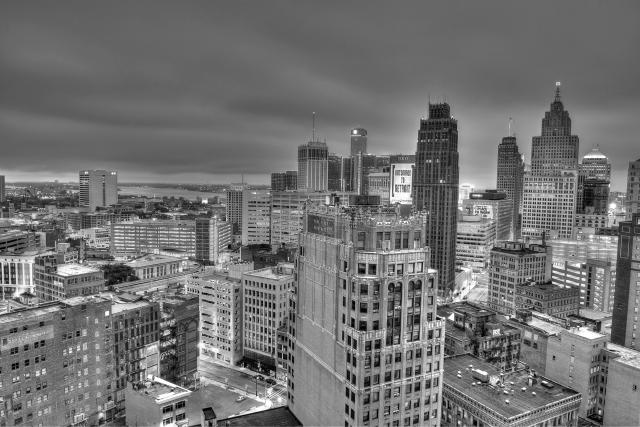The Contradictory Nature of Detroit’s Reimaginination
Gallery

Detroit is a city known for its pride; suburbanites, Detroiters, and tourists wear shirts toting, “Detroit Tough”, “Detroit Hustles Harder”, “Say nice things about Detroit”, and of course, “Detroit Tigers.” It is a city that, while in a deep, undeniable despair, just will not die. The question of how this could possibly be a certainty baffles economists, locals, urban planners, government officials, the homeless, and basically, the world. Everything about the city points to its general unsustainability: the vast class disparity, urban decay, lack of government funding and stability, and even its recent bankruptcy. Nonetheless, there are young entrepreneurs, disillusioned office workers with big ideas, activists, dreamers, gardeners, billionaires, and multinational companies looking for an image-change, just to name a few, who have moved to the city because of the seemingly ceaseless potential that this history-drenched, inexpensive, and largely open-ended city provides.
Yet, it’s frightening living in a city in which gentrification is a near-inevitability when the majority of the money and dream rich idealists are out-of-towners, financially sound, and white. In a city that is 83% African American, the racial divide between tech start-up and new businesses owners, land-grabbers, and organization founders and the city's black population is a glaring reality. Business-incubators and businesses like Ponyride, Techtown, Bizdom, Quicken Loans, and Shinola are springing up across the city and mostly in New Center, Detroit's financial district, and in Midtown, Detroit's college district. This has resulted in a push to renovate (and evict) local apartment buildings (including a 12 story, 127 unit building recently rebranded as “The Albert” which previously housed low-income senior citizens, many of whom were disabled), a wild frenzy for the cheap housing (many foreclosed upon houses being purchased by people who have never set foot in Detroit), higher housing tax rates, and many black-owned, small businesses being run out of their buildings as a result of increased rent and new competition. While it is true that not all of the businesses in Detroit are perpetuating this racial disparity within the city of Detroit, the power struggle is continuing and it lies largely in the hands of a select, powerful few who seem unaware or uninterested in the repercussions of their actions and their potential to repeat some of the city’s racist history.
However, the entrepreneurial approach is not the only method for a more optimistic future for the city. Thousands of artists, urban gardeners, musicians, poets, writers, activists, and community organizers are making their mark upon the city. The graffiti covered walls of buildings along Grand River have been transformed into a mile long strip of murals under the name, “The Grand River Creative Corridor.” The vast urban prairies have been turned into gardens which provide income, food, and community for Detroit residents and their neighbors. Schools are being started for the largely neglected and disenfranchised youth of the city. Typically, this sort of transformation would go unnoticed, but the magnitude of these projects has inspired people around the globe and cemented the question, “What does a post-industrial city look like?” into people's minds. This question has been answered in a thousand different, contradictory ways.
The controversy and wonder that is sparked around this notion of what “a Detroit reimagined” looks like is, indeed, what a city reimagined looks like, or at least so far now. It looks like the desire for a single, concise answer: some sort of a magic pill. It looks like Emergency Managers, evictions, first-time business owners, white money-grubbers; youth excited about education; poets and artists; kids in the service-industry paying their way through college; and suburbanites repping Detroit. The city is going to grow and change with each one of these conflicts, but many Detroiters share the hope that with each growth spurt the collective voice of the city will speak loudly enough to be recognized.
